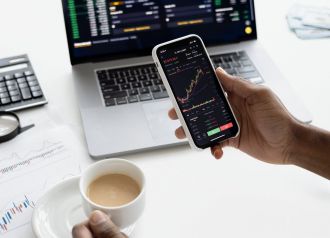Is it worth buying and investing in contemporary art
Some investors invest in items that are valuable as works of art: paintings, old and antique books, photographs, antiques, furniture, porcelain and other items. Some believe that to start entering the art market, you need at least $ 100 thousand. But large auctions also pay attention to small investors who have decided to join the art. Especially for them, inexpensive lots are exhibited with starting prices from $ 1000 to $ 5000.
Factors that affect the value of an art piece:
• its decorative value (this is often associated with the name of its author);
• historical value;
• cultural value;
• the degree of preservation.
The cost of an object of art may decrease if there are many of its counterparts on the art market. However, the presence (not on sale, but in general on the art market) of only 2-3 similar things may also not give a stable rise in the price of art objects selected for investment. You can determine, at least approximately, the cost of a work of art if you find out for how much its counterparts have been sold at auctions recently. Can you rank the modern video-games among art? Of course. And so, you can make investments cooperating with jkr group, where the esports can be of a great value.
The pros and cons of investing in art
There are pros of investing in contemporary art:
• Aesthetic satisfaction. Aesthetic pleasure appears in the perception of whole objects and phenomena, consisting of a number of elements. In this case, it is based on a peculiar combination of the whole phenomenon of its elements — sounds, colors, movements, forms, etc. Some such combinations are perceived with pleasure, others with displeasure.
• Status. The social status of the owner of works of art attracts to the owner not only connoisseurs and subtle connoisseurs of art, but also simply representatives of the elite of society. Expensive, well-known and popular art objects are a sign of the prestige and wealth of their owners.
• Life is short, art is forever. The artist dies, and the fruits of his hands, the creations of his spirit, mind, art live forever, and thus they preserve the memory of the person who created them. The master lives in his creations. Therefore, if you guess the segment, and, for example, the author of paintings, then investment in art will bring huge dividends.
There are also some cons:
• Difficulty in assessing value and authenticity. Each piece of art is unique in its own way. Because of this, the price is more influenced by subjective factors than objective ones. In general, how to determine the value of art objects is discussed separately.
• Special consultant. You need to have special knowledge in the field of art or hire a special consultant for this, which entails additional costs, sometimes more than the purchase itself. You yourself need to understand all the issues and subtleties of the art sector in which you are going to invest, and this also requires time and money. And this is already an investment in yourself.
• The unpredictability of fluctuations in prices and demand for art. You can buy a very expensive item, hold it for several decades, but still not get tangible income from its sale. And vice versa, if you're lucky, you can buy something for almost nothing, and after some time sell it for a fabulous price. Art objects change very slightly in price during various events of an economic and political nature. They are steadily increasing in price every year.

